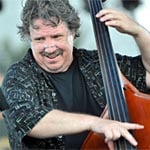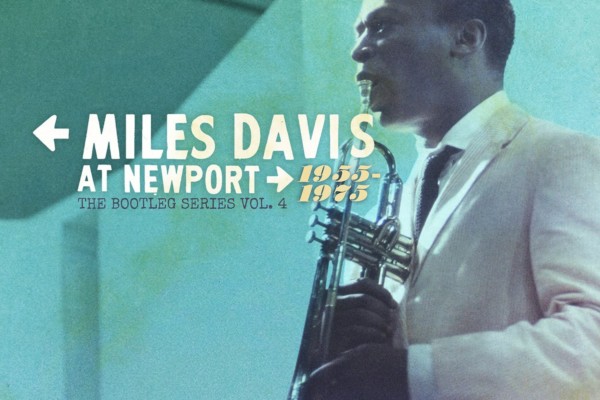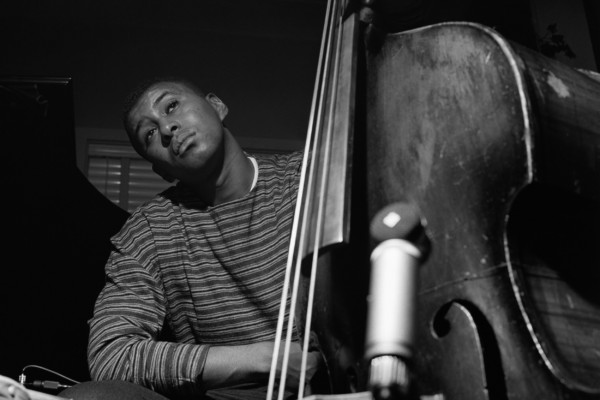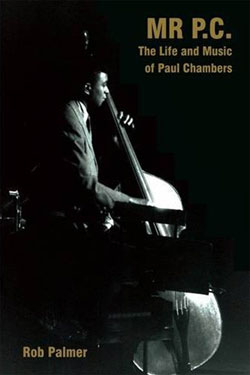Tale of the Fingers: An In-Depth Look at the Paul Chambers Tune
Editor’s note: help us welcome Keith White as a new contributor on No Treble.
I was checking out Mark Saltman’s column, in which he reviews the melody in Paul Chamber’s tune “Tale of the Fingers”. This is a notable melody, so I decided to analyze the tune’s structure and melody as a follow up to Mark’s great column.
First, let’s look at the structure of the tune. The key is Bb and the melody is mostly the Bb major scale. The form is 32 bars and is an A, B, C, A form. Take a look at the chart (PDF download). Above the staff, I’ve added some notes in brackets, to indicate the type of chord and the respective scale used. The mode names of the chords are also noted.
The A section is 8 bars long and to me, is like an extended version of the classic “I Got Rhythm” changes. The I chord (Bbmac7) fills the first two bars, followed by a #i chord (B diminished), for two bars. B diminished is actually a disguised VI7b9 chord. If you play the B diminished arpeggio, you will see that B, D, F and Ab spell a VIb9 chord, without the root.
The next two bars are a ii-V cadence in Bb, followed by the I chord for one bar.
Next is a Bb7 chord which is the V7 of IV, Ebmaj7. This is where, in my opinion, the tune temporarily shifts key.
While Ebmaj7 is the IV chord of Bb, let’s examine the next few bars of the B section and see if you agree with my analysis.
Look at how the Ebmaj7 chord moves to the # iv chord, E diminished, in bar three. The E diminished chord can definitely be thought of as the # iv in the key of Bb and I have labeled it as such. However, it could also be thought of as a #i in the “new” key because of what follows in bars 13 and 14, a ii-V in the key of Eb, followed by Ebmaj7 and then an F7 for one bar which is the V7 of Bb and leads us back to the original key. The eight bars of the B section are, with the exception of the last bar, identical to the eight bars of the A section in the key of Eb. That’s how I would remember this tune on the bandstand. It’s just easier. Some may take issue with this analysis, but at this point it’s a matter of what works for each bassist — the analysis being shared is what would work for me from a practical standpoint in a playing situation.
On to the C section. I call this the C section because the changes are completely different from any of the preceding changes. Let’s take a look:
The F7 in bar sixteen was thought to be leading us back to the original key, but the chord in bar seventeen is a Bb7 chord, the V of IV. Are we going back to the key of Eb? Nope. Look at the melody. There is an Ab in the line, hence, the Bb7. The next two chords are called – in my neck of the woods – the back side ii-V. To be crystal clear, it is the ii-V a half step below the tonic, in this case Bb. See, the back side of the key. I have labeled the A-7 chord as the Dorian mode. Normally, in the key of Bb, the mode associated with this chord would be the Locrian mode. However, since this cadence is functioning as the ii-V of vi, G-7, I’m calling it the Dorian mode because that makes more sense harmonically.
The remainder of the C section is a ii-V in the key of Bb which leads us to the last eight bars of the tune, the A section again. The only difference is there is no Bb7 in bar eight of the section or in this case, bar thirty two. If you are new to analyzing tunes, this type of analytic approach often takes time to become second nature.
Now, on to the melody.
The A section: with the exception of the last note in bar two, bars one and two are the Bb major scale. The last note in bar two, Ab, (circled on our chart) is being played across the bar line in anticipation of the next chord, B diminished.
Bars three and four could also be thought of as being in the key of Bb but since the chord is the #i chord, it has been labeled as the whole/half diminished scale. Notice the Fb passing tone (circled) which gives this line a very bebop sound. Bar five is essentially Bb major, hence the Dorian tag (note the circled passing tone, Db).
Bar six begins with a classic bebop lick based on the Lydian b7 scale. Miles Davis used this lick in 1948 in the tune, “Little Willy Leaps” and Jaco Pastorius used it all the time during his solos and even while walking the bass. Learning this lick and how to apply it in various playing situations will reward you beyond the effort it will take to master it. I believe you’ll find it can be used in a variety of ways. The Bb in the bar pulls the melody back into the key of Bb. Bar eight is again Lydian b7 with a #9 and a #11 in the melody. How cool is that?
The B section is mostly the Bb major scale with two exceptions. The last note in bar ten is just like the last note in bar two. In this case a Db being played across the bar line in anticipation of the E diminished chord. The last note in bar twelve is a half step approach note to the first note in bar thirteen.
Look closely at bar fourteen. The first two notes are a b9 and a #9 over a Bb7 chord. This idea comes from the altered scale which is the seventh mode of the melodic minor. The rest of the measure is Lydian b7.
The rest of the tune pretty much explains itself so we’ll leave it at that. However if you have a question or two let me know by emailing me.
This is an ambitious melody. Paul Chambers came up with a good one. Learn the melody well before you attempt to solo on this tune. As with many other tunes, the melody serves as an excellent guide on how to solo over a particular set of changes.
See you next time.




Awesome Jazz study here!
Thanks a Bunch!!
This melody is actually based on an older jazz standard called Strike Up The Band. This is a nice analysis from our contemporary point of view. However, I doubt very much that PC would have known or been able to compose using “lydian b7” as a structure. Paul’s concept was firmly rooted (no pun intended) in bebop, and all of the diminished and “bebop scale” and flat fives in the melody were part of the common jazz language in use at the time. Also, the melodic device Kevin cites as a combination of “1/2 step approach and chromatic passing note” is often referred to as an “enclosure” because of how the main note is being decorated both above and below – this is another common bebop trick.